Why Is My Christmas Tree Not Drinking Water? 4 Common Reasons and What You Can Do to Save Your Festive Foliage
A tree expert explains what you need to know about your dazzling fir and its watering needs
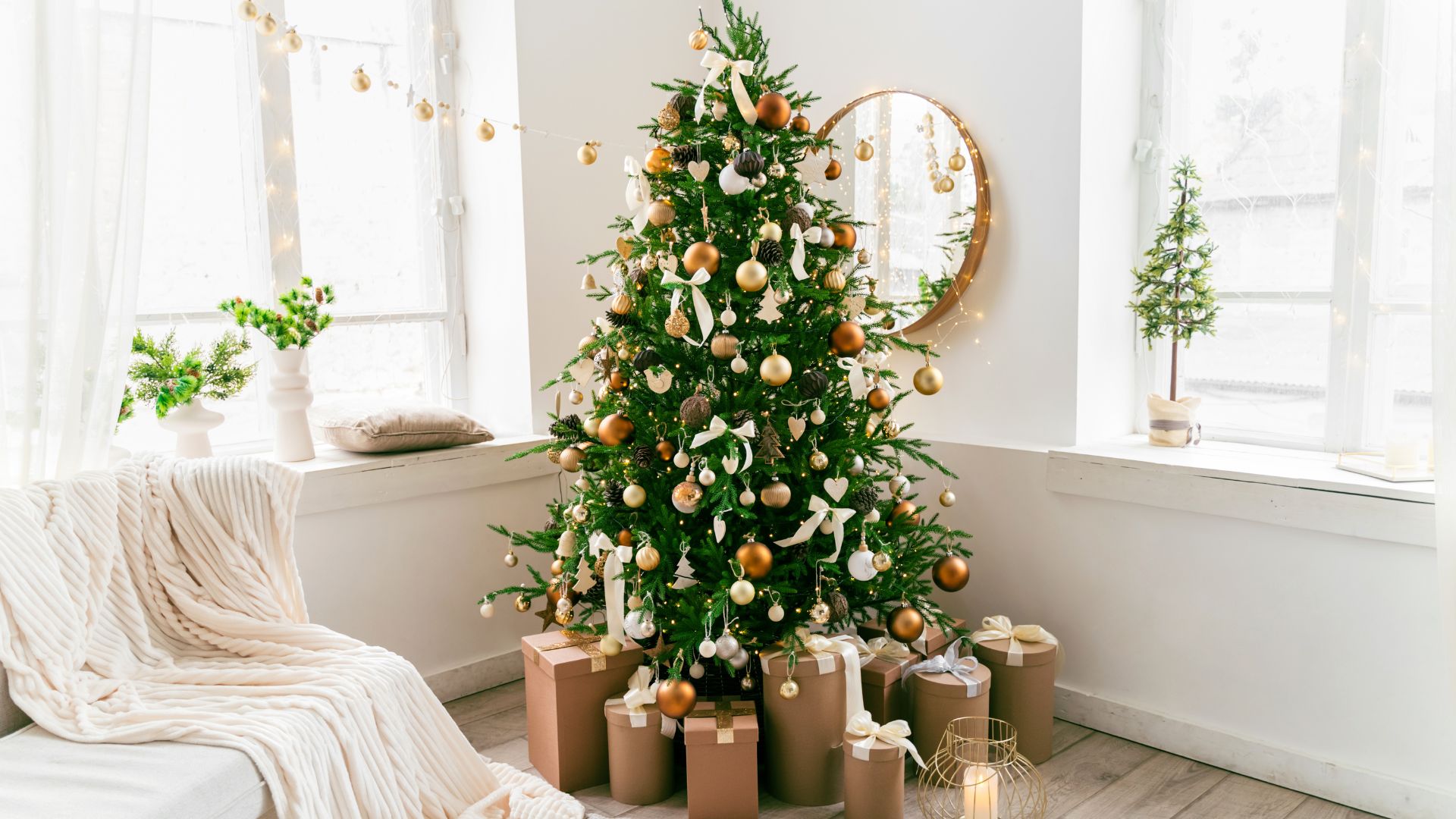

Christmas is right around the corner now, and nothing will dampen the spirit as much as your festive fir not making it to the big day. So, if you're wondering why your Christmas tree is not drinking water, there's no time like the present to try figure it out.
Having a real tree in your home is quite beautiful: you experience the woody smell of nature, you bring the outdoors indoors, and you get to embrace the tradition of decorating a tree in the way it all began (spoiler alert: at the beginning of Christmas' origins, people didn't use artificial trees!). Having a real tree in your home means you'll need to brush up on your knowledge of Christmas tree care though, and if your tree has stopped drinking water, it's probably a sign it needs a bit of nurturing.
I talked to a Christmas tree expert to uncover four of the most common reasons Christmas trees may stop drinking water to hep you on your quest to figuring out why yours isn't acting too merry. It's not too late to save your tree, so let's get into it.
1. Your tree's base needs a fresh cut
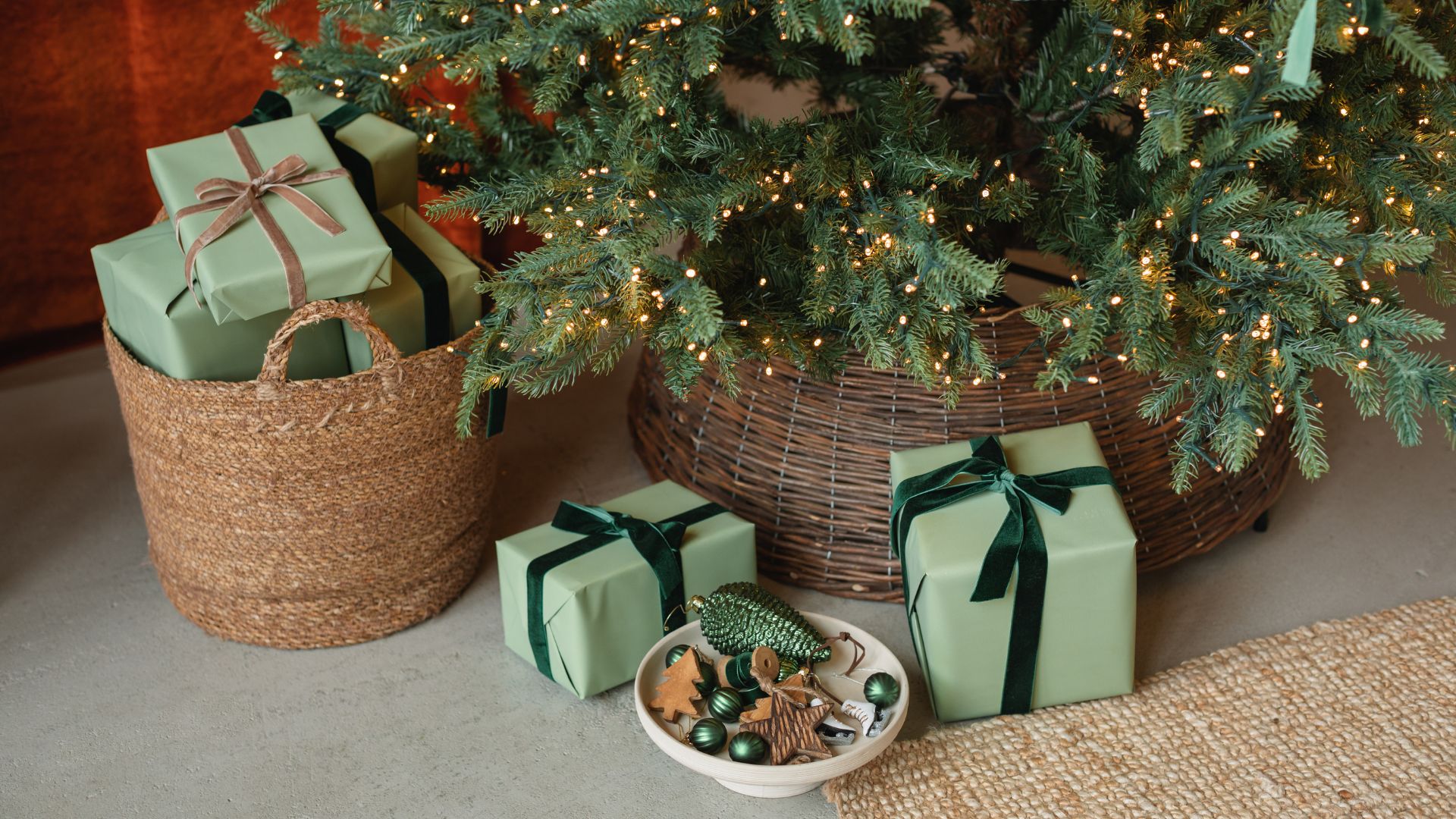
Whatever type of Christmas tree you have, when the trunk is cut into, sap from the wood comes out. This operates as a natural mechanism in the wild to preserve the health of the tree, so when the tree gets injured, it seals over the wound using sap.
If your Christmas tree isn't drinking water and you didn't inspect its base for sap, there may be a sap seal blocking the base, meaning your Christmas tree isn't able to drink. To remedy this, you need to cut a few inches off of the base of your Christmas tree's trunk and then place it immediately back into water before the seal can begin to form again.
Tamara Hogan, plant expert at Fast Growing Trees, says, "If you get your Christmas tree and the store didn't freshly cut its base before you took it home, cut some off of it yourself. This reopens the cells for the tree to take up water."
Using a handheld saw like the fiskars handsaw for fresh wood from Amazon and a tape measure, cut 3 to 4 inches off of the base of your Christmas tree by sawing in a backwards and forward motion. Placing a tarp underneath your tree can be useful, too, to help collect sawdust and make sure your tree doesn't gather dirt from the ground on its needles. Amazon's Xpose safety multipurpose protective green poly tarp will do the trick.
"Even if you have had the tree at home for some time and haven’t put it in water yet, trimming that base will allow for the callused closed-off bottom to reopen," says Tamara, so it isn't too late to remedy this problem.
Don't forget to wear gloves to protect your hands from sap while cutting your tree. The Vgo chainsaw gloves on Amazon are a great choice.
2. Excessive heat is dehydrating your tree

Look around the room where your Christmas tree is. Is it placed near a source of winter heating, such as a radiator or a fireplace? Winter heating can damage many things, including your sofa and your Christmas tree.
"When we bring Christmas trees indoors where we are often cranking up the heat for the winter, they are exposed to hot and dry environments," says Tamara. "Be cautious about keeping your Christmas tree by vents, radiators, or fireplaces that may cause the tree to dry out faster."
A drying-out Christmas tree will shed needles, begin to turn brown, and eventually smell bad before dying, so near a heat source is one of the places you should not put a Christmas tree for sure.
The simple solution is to ensure that your Christmas tree stays at least 4 feet away from a heat source at all times and that you water it correctly going forward. If your tree isn't already incredibly brown and beyond saving, it should begin to perk up once it's moved elsewhere in the room and given proper hydration.
3. You didn't give your tree enough water when it first came home
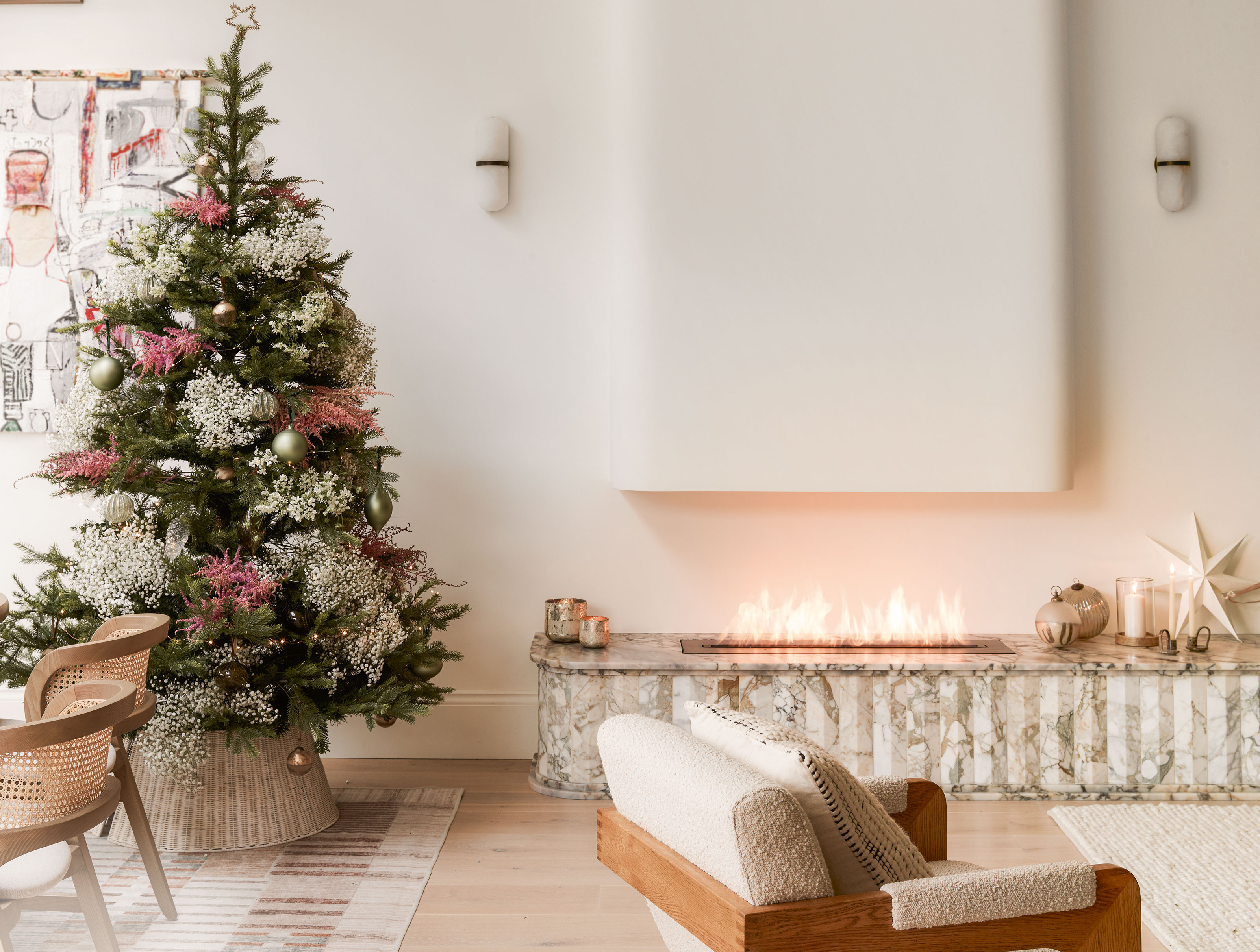
A freshly cut Christmas tree will be very thirsty, requiring a lot of water in its base to remain fresh and strong. It's a common mistake to give a new Christmas tree a small amount of water, like a small daily top-up, instead of extra to account for the fact that it'll be dehydrated from the journey home. This mistake can cause your tree to stop drinking, as a tree that's already dehydrated to begin with may be too weak to take up water. But fear not, for it's more than likely not too late to revive your dying Christmas tree.
"A common mistake I see is that people give their Christmas tree a small amount of water and then don’t revisit it until few days later," says Tamara. "By the time water is given to the tree again it has stopped drinking and then needles start to drop. The base may have also resealed from the initial cut and won’t drink, as so little water was put into the tree's stand to drink in the first place. So keep your tree with plenty of water at all times once you set it up in the tree stand."
The best way to keep an eye on whether your Christmas tree is receiving the correct amount of water is to stick a moisture meter like the Dr.Meter soil moisture meter from Amazon into its soil. This little gadget will tell you when the soil of your tree is dry, damp, moist, or waterlogged on a scale of one to ten, so you won't risk under or overwatering your tree again. It's ideal for every type of Christmas tree, so be sure to give it a go.
You can also use a self-watering system that will incrementally water your Christmas tree for you, so the worry doesn't even have to stay in your mind. We particularly like the automatic Christmas tree watering system and the santa's tree helper automatic Christmas tree watering system with enhanced liner, both from Amazon.
4. Your tree is actually getting enough water
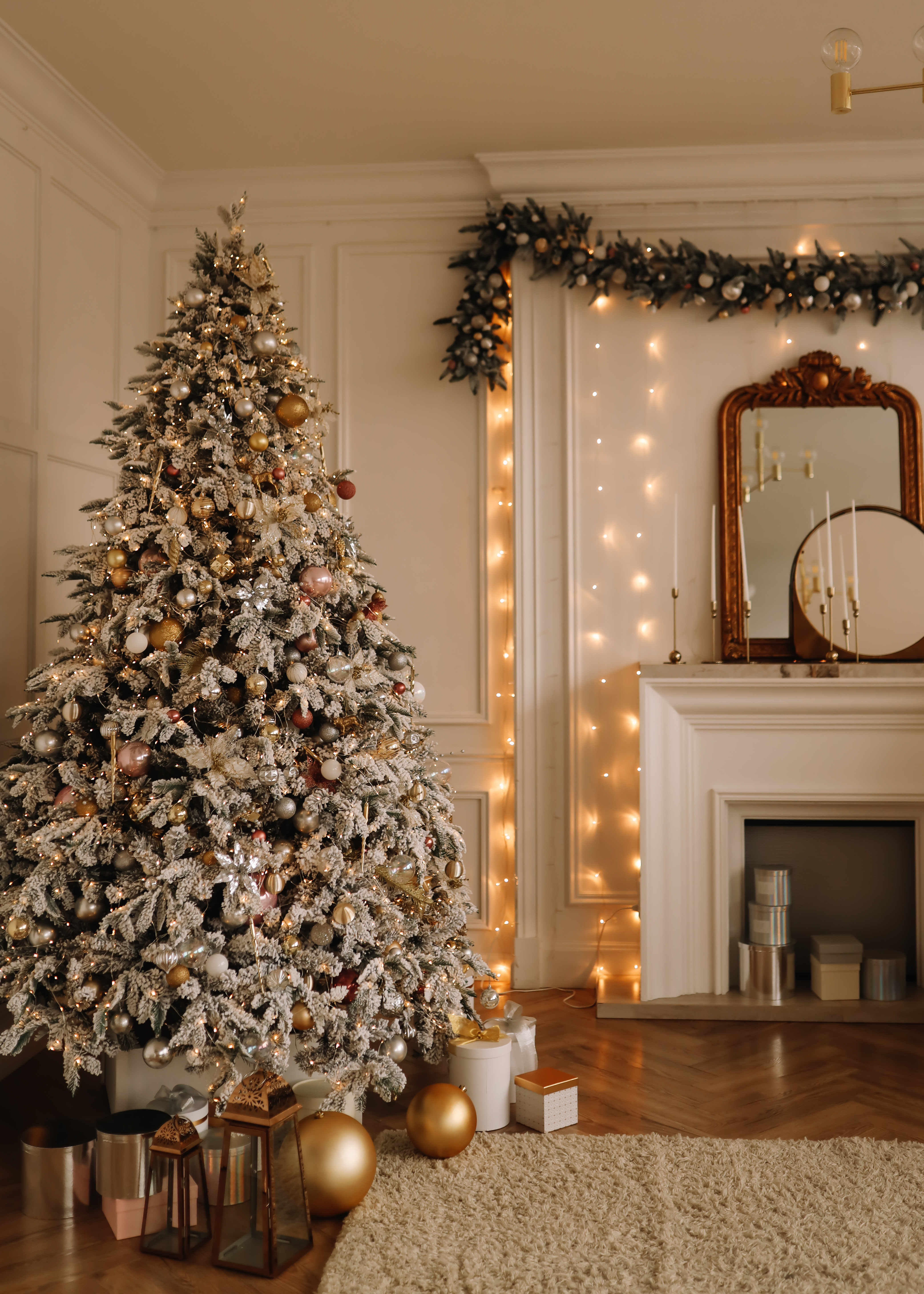
Lastly, your tree might not be taking up water right now because you are giving it the exact amount it needs. That's right, you might not be doing anything wrong.
"Another reason why Christmas trees stop drinking is because they have been watered correctly," says Tamara. "After the initial first few days to a week of a tree chugging water, you’ll notice that it can stop abruptly. That’s because the tree is properly hydrated at that point and will start to take up water slower."
If your Christmas tree is showing signs of dehydration like dry, brittle, drooping branches, dropping needles, and browning, your tree is experiencing a problem, but if your tree seems healthy and a moisture meter indicates that the soil is at a good level of dampness (7-8), then your Christmas tree is happy, healthy, and ready for some festive Christmas decorating ideas.
FAQs
What are the other reasons a Christmas tree might stop drinking water?
There are many reasons why a Christmas tree may stop drinking water, from sap sealing its base to being overly dehydrated, but another factor impacting a Christmas tree's ability to drink is its age.
Tamara Hogan, plant expert at Fast Growing Trees, says, "If the tree has been up for a while and isn’t drinking anymore, the biggest reason is likely age. Trees need roots. The way that the tree drinks without them is very much like a person sucking up water through a straw. As the leaves pull for water, the trunk sucks it up and delivers it throughout the plant. But without roots to supplement the rest of the things a tree needs, it is slowly going to shut down."
If your Christmas tree is a relatively new addition to your home, it's more than likely one of the other reasons discussed here causing your tree to not drink water.
Be The First To Know
The Livingetc newsletters are your inside source for what’s shaping interiors now - and what’s next. Discover trend forecasts, smart style ideas, and curated shopping inspiration that brings design to life. Subscribe today and stay ahead of the curve.

Ciéra is a writer and regional laureate with particular passions for art, design, philosophy and poetry. As well as contributing to Livingetc, she's an Editorial Assistant for Design Anthology UK and a contributing writer for Homes & Gardens and Apartment Therapy. Previous commendations of hers include being Highly Commended by The Royal Society of Literature and receiving a prestigious MA Magazine Journalism scholarship to City, University of London.
-
 Jeremiah Brent Captures the Grit and Glamour of NYC in His New Loloi Collaboration
Jeremiah Brent Captures the Grit and Glamour of NYC in His New Loloi CollaborationThe TV-famous interior designer looked out of his own window — and hit the pavement — for a collection that turns city spirit into tactile design
By Julia Demer
-
 This Specific Fabric Print Is Literally Everywhere Right Now — Here's Why
This Specific Fabric Print Is Literally Everywhere Right Now — Here's WhyIt's whimsical, artistic, and full of character. We've called it already: Dedar's 'Tiger Mountain' is the fabric that will define 2025
By Devin Toolen
-
 These Are the Dos and Don'ts of Bamboo Plant Placement — Follow This to Avoid Bad Feng Shui
These Are the Dos and Don'ts of Bamboo Plant Placement — Follow This to Avoid Bad Feng ShuiBy following the experts' guidance on where to place this houseplant you can usher luck, wealth, and prosperity into your home
By Lilith Hudson
-
 Is It Okay to Have a Mirror Facing a Door in Feng Shui? The Verdict Is In and It Just Might Surprise You
Is It Okay to Have a Mirror Facing a Door in Feng Shui? The Verdict Is In and It Just Might Surprise YouDecorating your home with mirrors calls for intention if you're dressing your space in accordance with Feng Shui. Here's what you should know.
By Amiya Baratan
-
 4 Things to Unpack as Soon as You Move House — For a Comfortable and Organized Fresh Start
4 Things to Unpack as Soon as You Move House — For a Comfortable and Organized Fresh StartIf you have a major move in the works and you're looking to prepare in advance, this is the starter kit you need to properly set up your new home.
By Amiya Baratan
-
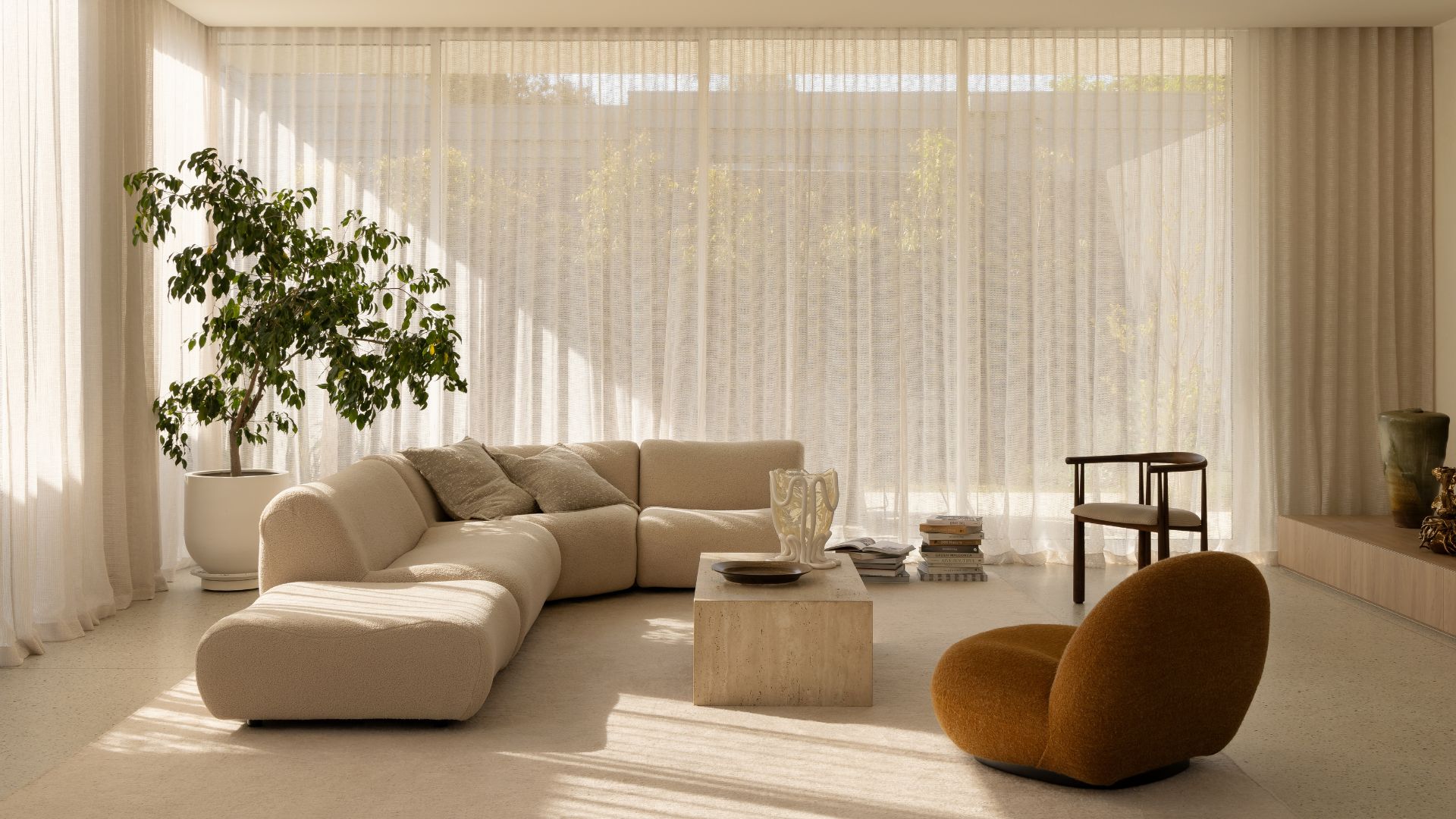 10 Decluttering Challenges to Have on Your Radar This Year — For a Tidier, More Mindful Home
10 Decluttering Challenges to Have on Your Radar This Year — For a Tidier, More Mindful HomeIf you're interested in transforming your home for the better, here are 10 decluttering challenges I recommend for a professionally tidy space.
By Amiya Baratan
-
 Biophilic Decluttering — What to Take Out of Your Home (and What to Put in) for a More Natural Home
Biophilic Decluttering — What to Take Out of Your Home (and What to Put in) for a More Natural HomeTry your hand at biophilic decluttering to ground your interiors, connect to the environment, and cure chronic clutter in one go. Here's how.
By Amiya Baratan
-
 The 10 Different Types of Kitchen Taps — And the Pros and Cons of Each One to Know Before You Pick
The 10 Different Types of Kitchen Taps — And the Pros and Cons of Each One to Know Before You PickFrom sleek pull-outs to vintage bridge taps, explore 10 kitchen tap styles that mix function, flair, and a splash of cool
By Linda Clayton
-
 How Much Does an Extension Cost in 2025? Renovation and Design Experts Break Down Your Budget
How Much Does an Extension Cost in 2025? Renovation and Design Experts Break Down Your BudgetExplore how much different types of extensions cost in 2025 to budget for your project accurately
By Amy Reeves
-
 9 Bathroom Storage Mistakes You're Probably Making That Make Using This Space Much Harder — And What to Do Instead
9 Bathroom Storage Mistakes You're Probably Making That Make Using This Space Much Harder — And What to Do InsteadDiscover which mistakes are to blame for your overcrowded and cluttered bathroom
By Seraphina Kyprios